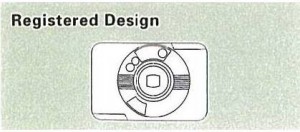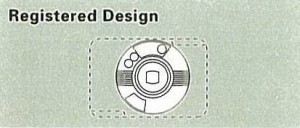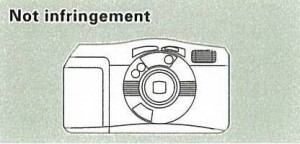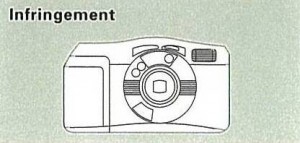Amendment of Japanese Design Law
地域:日本
業務分野:意匠
カテゴリー:法令
『Yuasa and Hara Intellectual Property News』Vol. 4所収
ユアサハラ法律特許事務所、1999年
森川 正仁
INTRODUCTION
The current Japanese Design Law was enacted in 1959, almost forty years ago.
Consequently, Japanese Design Law has become outdated due to developments in industrial design and is unable to protect registered designs from copied designs.
Therefore, the Japanese Design Law was amended in May 1998 and will become effective from January 1, 1999.
Higher Standard Of Creativity Requirement
The creativity requirement is now judged by comparison with designs publicly known anywhere in the world, whereas, before the revision, requirement was judged by compari-son with designs publicly well known in Japan. Therefore, a design that could easily have been created on the basis of publicly known designs or motifs in either Japan or abroad will be rejected.
Introduction Of Design Protection For Potions Of Articles As Partial Designs
Under the current Design Law, a design regarding a portion of an article cannot be protected, if the portion per se cannot be traded as an independent item of goods.
Therefore, it is not possible to win an infringement suit when third par-ties copy a part of the article only as follows:

However, under the revised Design Law, a portion of an article will be protectable as a design as follows:

Abolition Of The Similar Design System And Introduction Of The Concept Of Associated Designs
In order to realize a wide scope of protection of designs which have a high level of creativity, the following changes will be effected:
1) The similar design system itself is to be abolished, but protection for a design associated to a principal design is introduced as the associated design system. How- ever, an associated design must satisfy the conditions that said design must be filed by the same applicant on the same date as the principal design, and the relationship between the principal design and the associated design must be mentioned in the request form. In the case of design applications claiming priority, it is important to note that the priority date of the principal design and the associated design must be the same. For example, if someone files a design application for a principal design claiming priority based on the U.S. application (US filing date: July 8, 1998) before or on January 8, 1999 in Japan and then files an associated design application for a design similar to the principal design claiming priority based on the U.S. application (US filing date: July 9, 1998) before or on January 9, 1999 in Japan, the application for the associated design will be rejected.
2) The design right registered as an associated design has the same effect as that of a usual design right. Thus, procedures exclusively applied to similar design applications will no longer exist.
3) The design right for an associated design lapses when the duration of the principal design right expires. However, if the design right of a principal design lapses for reasons other than its expiration, the design right of an associated design is maintained.
4) The transfer, and the grant of an exclusive license of the design right of an associated design can only be made in conjunction with the right of a principal design.
Protection For System Design
1) Registration requirements are not imposed on each of the articles but only on the whole of the design.
2) The scope of protection in a “set of articles” stipulated in the ordinance should be broadened and it should have more flexibility than that of the current Design Law which is restrictive. The number of articles in a set of articles will be increased.
3) The divisional application system for each of the articles in a set of articles is abolished since registration requirements are no longer imposed on each of the articles.
Samples of set of articles: golf clubs sets, stationery sets, kitchen system, personal computers systems, audio sets, etc.
Reviewing Of Right Of a Prior Application
Under the revised Design Law, a rejected application is not given the status of prior art over a later application.
Simplified Requirements Regarding The Description In The Drawings
Under the revised Design Law, the number of necessary drawings to express a design can be clearly mini-mized, thus allowing various modes of expression in such drawings.
Other
Exclusion from protection of design based only upon function the articles.
意匠分野の他の法律情報
お電話でのお問合せ
03-3270-6641(代表)



